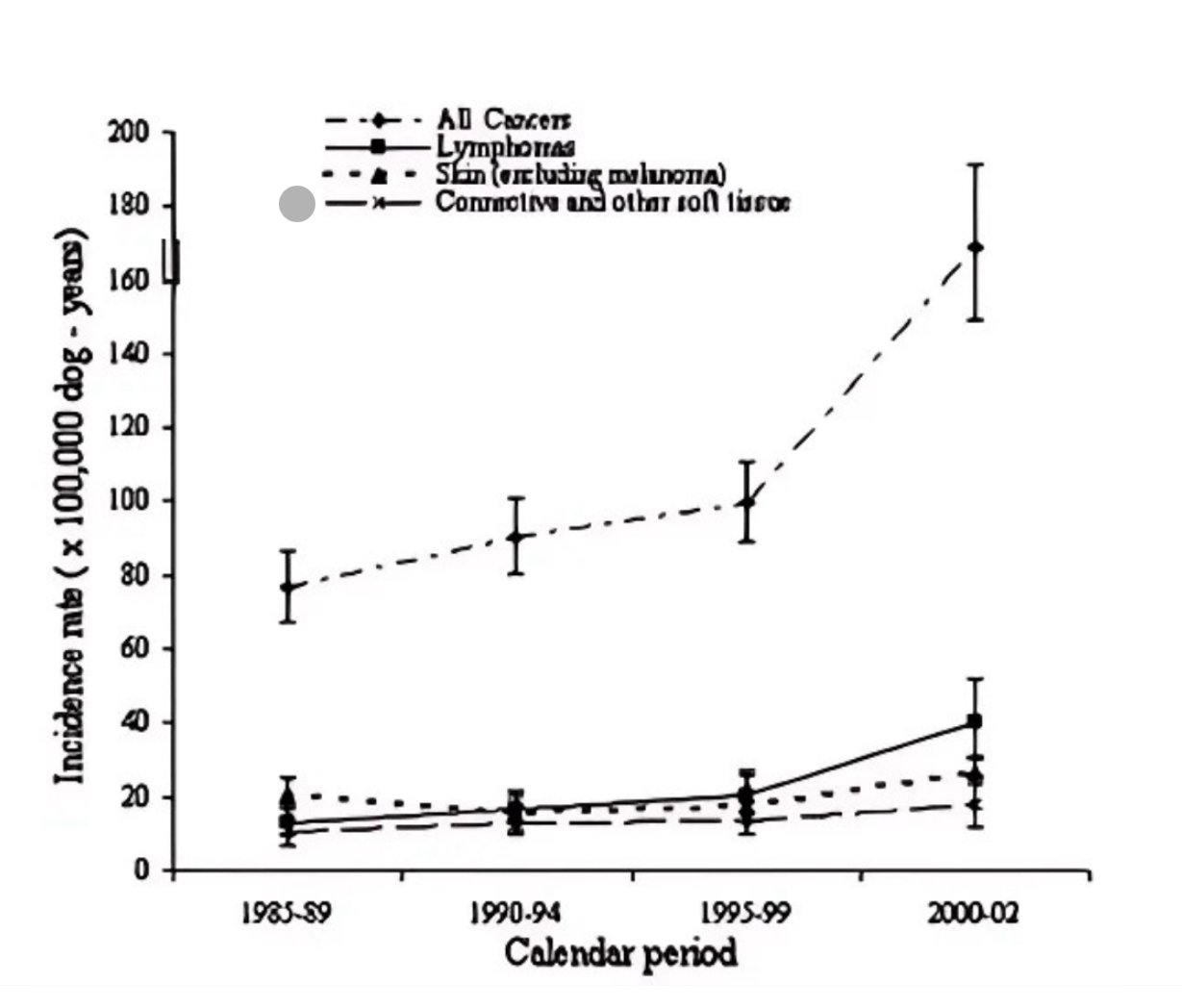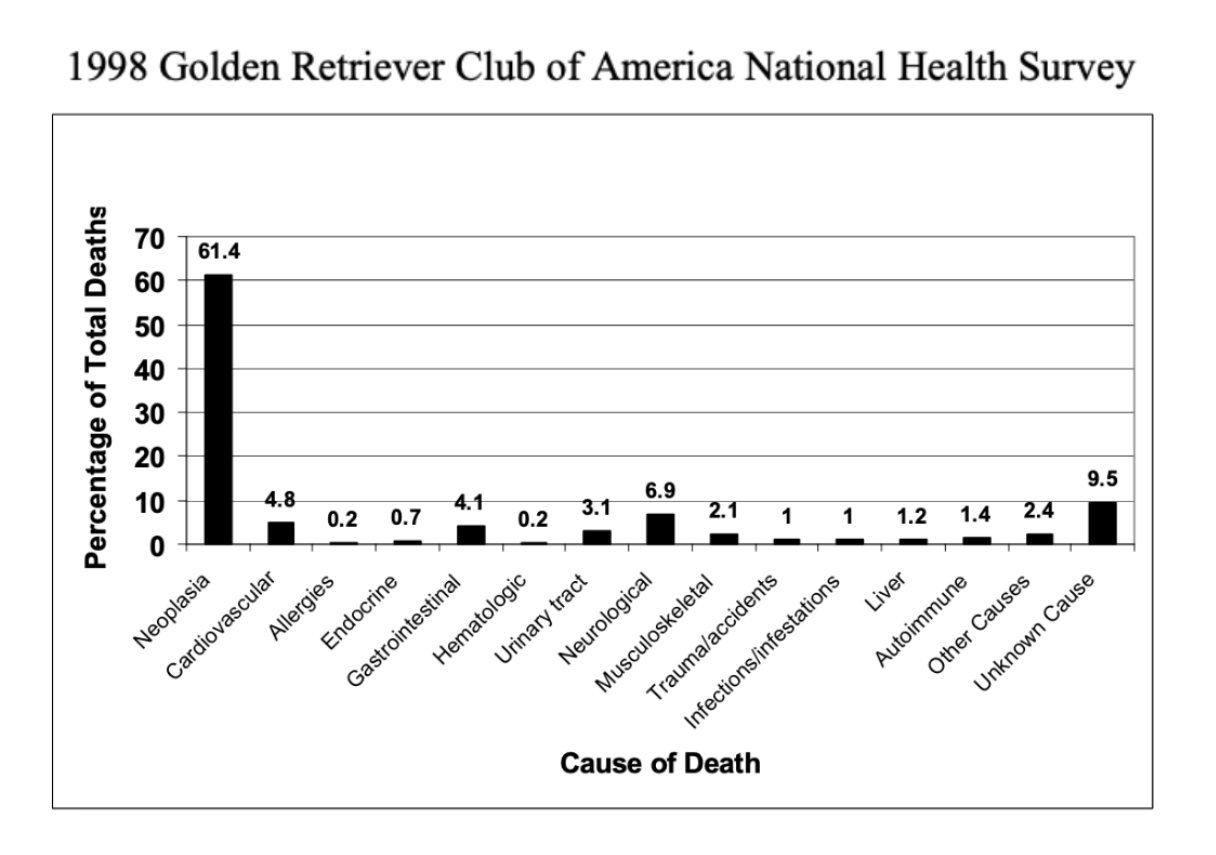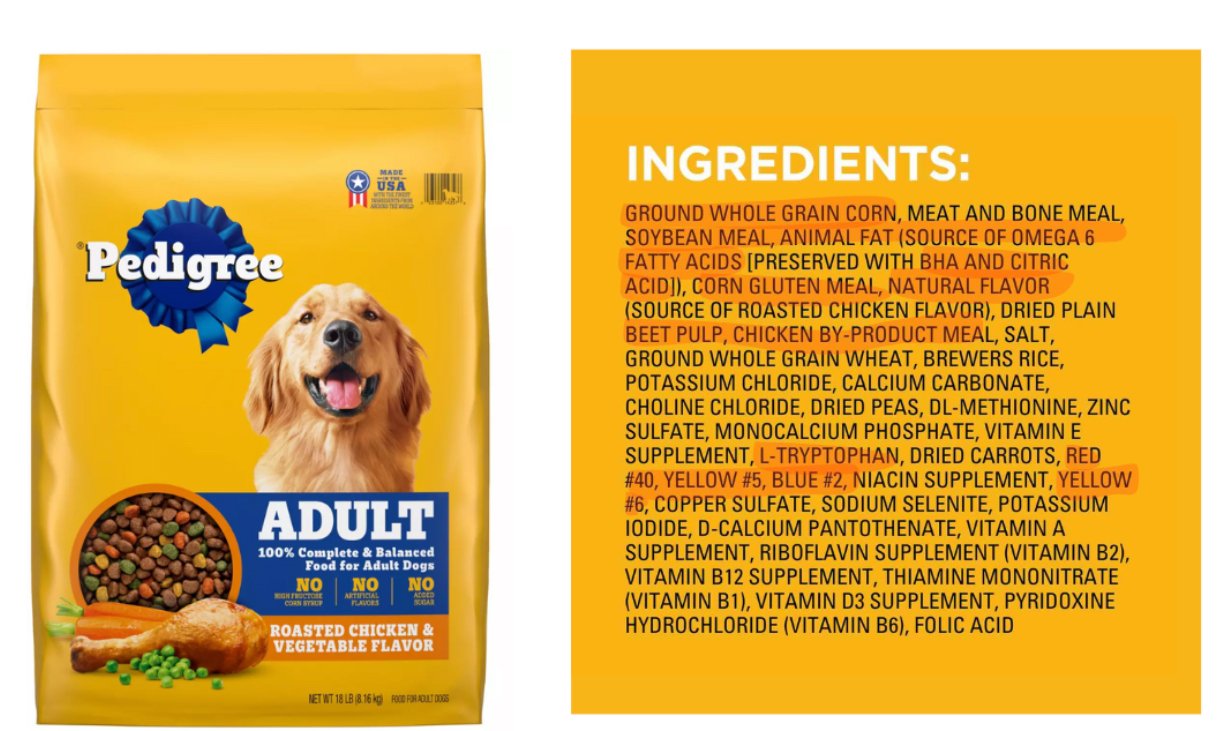By Leigh Erin Connelly, MD @connealymd
Why is Cancer Now the Leading Cause of Death Among Dogs and Cats in the U.S.?
Published by Connealy, MD on February 4, 2025
Cancer is now the leading cause of death for both dogs and cats.
Today it’s estimated that one in four dogs will develop cancer at some point in their lives.
Some suggest that rising cancer rates in pets are simply a result of longer lifespans and advancements in veterinary care. While aging does increase cancer risk, it doesn’t fully explain the sharp rise in cases across both pets and humans. In fact, lifespan is declining in some breeds. For example, in the 1970s, Golden Retrievers commonly lived up to 17 years, but today, their average lifespan has dropped to 10-14 years, with over 60% of them dying from cancer.
Our pets are often an extension of ourselves. They adapt to our routines and environments: they share our homes, our habits, the same toxin exposures, and risks. As humans are increasingly getting cancer, so are our beloved pets.
This trend is particularly serious in North America. A 1998 health report by the Golden Retriever Club of America found that 61.4% of Golden Retrievers died from cancer. European-bred Goldens have much lower cancer rates, with a 2010 study reporting only a 38.8% cancer mortality rate.
Some suggest that rising cancer rates in pets are simply a result of longer lifespans and advancements in veterinary care. While aging does increase cancer risk, it doesn’t fully explain the sharp rise in cases across both pets and humans. In fact, lifespan is declining in some breeds. For example, in the 1970s, Golden Retrievers commonly lived up to 17 years, but today, their average lifespan has dropped to 10-14 years, with over 60% of them dying from cancer.
Our pets are often an extension of ourselves. They adapt to our routines and environments: they share our homes, our habits, the same toxin exposures, and risks. As humans are increasingly getting cancer, so are our beloved pets.
This trend is particularly serious in North America. A 1998 health report by the Golden Retriever Club of America found that 61.4% of Golden Retrievers died from cancer. European-bred Goldens have much lower cancer rates, with a 2010 study reporting only a 38.8% cancer mortality rate.
I. So, what is driving cancer in our pets?
Poor nutrition and chemicals in pet food. One of the greatest contributors is poor diet. Modern pet foods are packed with biologically inappropriate ingredients and fillers like soybean meal, rice and soy flours, food dyes, artificial flavors, corn gluten meal, low quality meat byproducts and animal fats, and seed oils.
Many of these formulations rely on heavily processed fillers that provide little bioavailable nutrition. They often contain oxidized oils, which generate harmful free radicals, as well as mycotoxins, toxic compounds produced by mold-contaminated grains that have been linked to liver damage, immune suppression, and cancer.
Excessive omega-6 fatty acids from seed oils (PUFAs) in pet foods are particularly concerning because they are highly unstable and easily oxidized, producing aldehydes that are directly carcinogenic. These fats promote chronic inflammation, which is a major factor in cancer development. In humans, a high intake of oxidized PUFAs has been linked to an increased cancer risk due to their metabolism-suppressive, estrogenic, and inflammatory effects. Given that pets process fats similarly to humans, these oils may pose the same carcinogenic risks to them.
Many pet foods also contain synthetic preservatives (BHA, BHT, ethoxyquin), which have been linked to carcinogenesis and tumor growth.
Pesticide and lawn chemical exposure. Pets are low to the ground, sniffing, rolling, and licking surfaces contaminated with pesticides.
Common lawn sprays and herbicides (like glyphosate in Roundup) have been linked to increased cancer risk in both humans and animals.
A study conducted by researchers from the Cummings School of Veterinary Medicine at Tufts University investigated the relationship between lawn chemical exposure and the risk of canine malignant lymphoma (CML). The study found that dogs living in homes where professionally applied pesticides and herbicides were used had a 70% higher risk of developing CML compared to dogs in homes without such treatments.
.March 31, 2023
Dogs, lawn care and cancer
What we know about lawn chemicals and cancer in Dog? BY BETHANY W. ADAMS
A 1991 study found that dogs whose owners used herbicide 2,4- D were up to 200% more likely to develop lymphoma, and despite a follow-up study with ties to the chemical industry
refuting the claim, a 2012 study confirmed an increased risk. According to a 2013 study, Scottish terriers exposed to herbicide-treated lawns had a greater risk of cancer-up to seven times higher. Trepanier is currently comparing chemical exposures in dogs with and without cancer in three ongoing studies. (Boxers are especially needed —email Lauren Trepanier to learn more.)
Spaying, neutering, & altered hormone balance. While spaying and neutering are widely recommended, early removal of reproductive organs leads to lifelong hormone imbalances. Progesterone (in females) and testosterone (in males) offer protective benefits against inflammation, metabolic disorders, and even cancer, but when the ovaries or testes are removed, production of these protective hormones declines.
Studies show that spayed/neutered animals are more prone to hypothyroidism, impaired insulin signaling, and certain aggressive cancers like osteosarcoma and hemangiosarcoma.
Toxic flea & tick treatments
Many flea and tick medications contain organophosphate and pyrethroids, chemicals linked to neurotoxicity, hormone disruption, and cancer. While designed to target parasites, they can also harm the nervous system of pets and humans.
Organophosphate inter-here with nerve signaling, leading to tremors, cognitive issues, and endocrine disruption, affecting metabolism and immune function. Pyrethroids, often considered safer, have been linked to seizures in cats, hormone imbalances, and oxidative stress, which fuels inflammation and cancer. Spot-on treatments and collars leave chemical residues on pet fur and skin for weeks, leading to prolonged absorption and exposure.
I know this topic is difficult because our pets hold such a special place in our hearts. Animals bring joy and companionship. But pets also serve as a reflection of our modern world. They are a perfect example of what happens when someone is taken out of their natural environment. They are becoming sicker, just like we are. We can take their rising health issues as an important lesson: what we eat, what we’re exposed to, and how we live matters. And how these choices don’t just affect ourselves, but everyone around us.
Some things we can do to reduce risks in our pets:
Avoid ultra-processed kibble; opt for fresh, whole foods with high-quality animal proteins and healthy fats.
Avoid pet foods high in seed oils (soy, canola, corn) and opt for stable fats like beef tallow or coconut oil.
Reduce pesticide use, avoid lawn chemicals, and choose natural flea and tick prevention if possible.
Give plenty of physical activity and natural light to support metabolism, immune function, and overall well-being.
Use clean, filtered water to reduce exposure to heavy metals, fluoride, and other contaminants.
Choose non-toxic cleaning products, avoid synthetic air fresheners, and limit plastic exposure.




